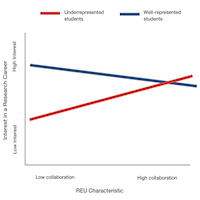
The NCWIT Scorecard: A Report on the Status of Women in Information Technology
In the last 10 years, the computing community has started paying more attention to the lack of gender diversity in the field. There have been myriad programs introduced to amend the problem, including awareness-raising campaigns, out-of-school and in-school courses, workshops, and camps. At the national level, there are policy movements to include computer science as a high school graduation requirement, new recruitment practices and other organizational reforms introduced at the university and industry levels, and more. Many of these movements have been evaluated, and many have shown promise that they have, or will, make a difference in their local context. However, to understand whether or not all of these interventions, taken together, have actually “moved the needle,” we need to review the longitudinal data. How have girls’ and women’s representation in computing at the various levels changed, if at all, over time? And are we seeing any positive trends?











